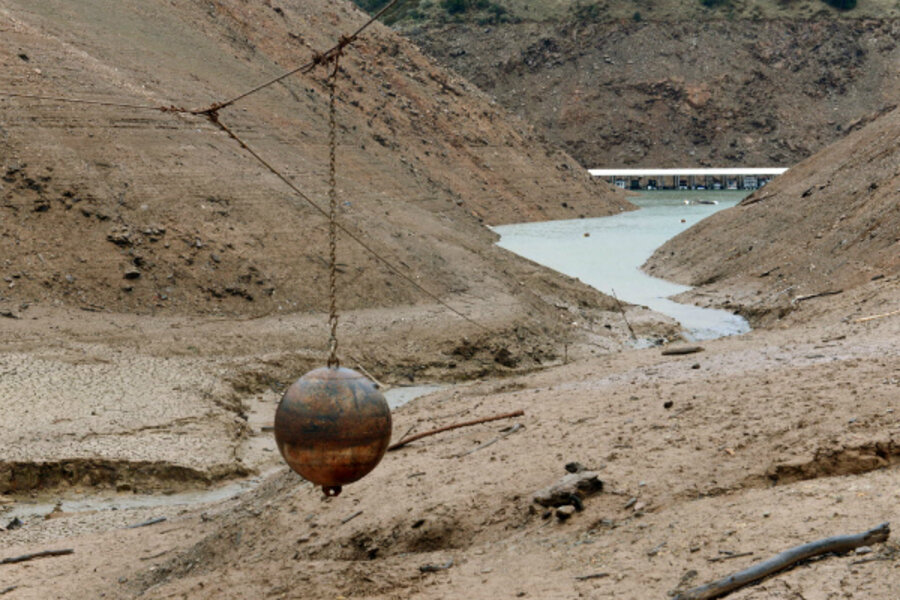Extreme drought threatens central California coast's coho salmon
Loading...
| Los Angeles
California’s drought is making life hard for the state’s salmon population and may soon claim at least one entire species as victim.
The California Coast coho salmon relies on the small creeks and streams flowing into the ocean along the coast for its life cycle. With most of these outlets depleted and with sandbars growing at the river mouths because of lack of runoff from the snow packs in the mountains to the east, the tiny hatchlings cannot get to the ocean nor can the adults make their way back upstream to spawn.
Heavy rainfall over the weekend sent water coursing through many of these blocked river mouths, but wildlife officials say this is a drop in the bucket compared with the overall need.
“Recent rain, while good, isn’t enough,” says Jordan Traverso, spokeswoman for the California Department of Fish and Wildlife, in an e-mail. According to the Department of Water Resources, she notes, “we would need it to rain heavily every other day through the end of May to reach average precipitation.”
Many of the state’s salmon populations were already in trouble before the current drought conditions, says Ms. Traverso. The coho population had already plunged from some 56,000 in the 1960s to roughly 500 adults in 2009. The population now hovers in the low thousands, according to a report by the National Marine Fisheries Service, reported in the Los Angeles Times.
Though monitoring data are still coming in, this year’s salmon cohort looks to be at-risk as well, says Traverso. “The drought is putting further stress on the situation,” she says.
Still, planning efforts over the past decade have put important safeguards in place. Hatcheries have focused on bringing fish in from the wild into three facilities in the central coast.“We have a lot of staff monitoring conditions,” says Traverso, adding that hatcheries will have a role in rebuilding recreational fisheries adversely affected by the drought. They will also have a role in rebuilding at-risk fisheries.
Aside from California's duty to protect salmon and steelhead for their intrinsic value to the people of the state, which includes traditional tribal uses, “salmon is a huge, multimillion-dollar industry" here, Traverso notes.
The state has many choices about water management, says John McManus, executive director of the Golden Gate Salmon Association. “We have tens of thousands of jobs hanging in the balance,” he says, depending on the decisions made about how to manage water in the state.
“I don’t see this as human beings being pitted against fish,” he says, because this industry affects so many people’s livelihoods. In this state, everything from the large commercial interests to the local marinas and bait-and-tackle shops are impacted, he says.
“This is really a balancing act between one set of human needs and another,” he adds.
To protect the salmon industry from further depletion, wildlife officials last week closed all coastal streams from recreational fishing, leaving small shops such as Gualala Sport and Tackle high and dry. Barbara McDaniel, who has worked at the shop for the past two years, says sales have been way down. The store is just across the street from the mouth of the Gualala River, which was bursting at its banks over the weekend.
"It was amazing,” says Ms. McDaniel, who says she watched as fast, dirty water from the heavy rains broke through the built-up sand berms at the mouth of the river.
But the rivers will remain closed to recreational fishing, at least until April, she says.
“We are getting a lot of calls,” she says, “and I have to tell them the river won’t open for fishing.”







